
The Grand Canyon is one of the most visited natural attractions in the United States. At 277 miles long and 18 miles wide, the Grand Canyon is expansive with entry points at the North, South and West rims of the canyon. By far, the two most popular spots for exploring this natural wonder are the South and West Rim. Both are open year-round, both are expansive, offering breathtaking views and inspiring adventures. How do you choose? Rim to Rim, consider these distinct differences so you can decide what’s right for you.
LOCATION
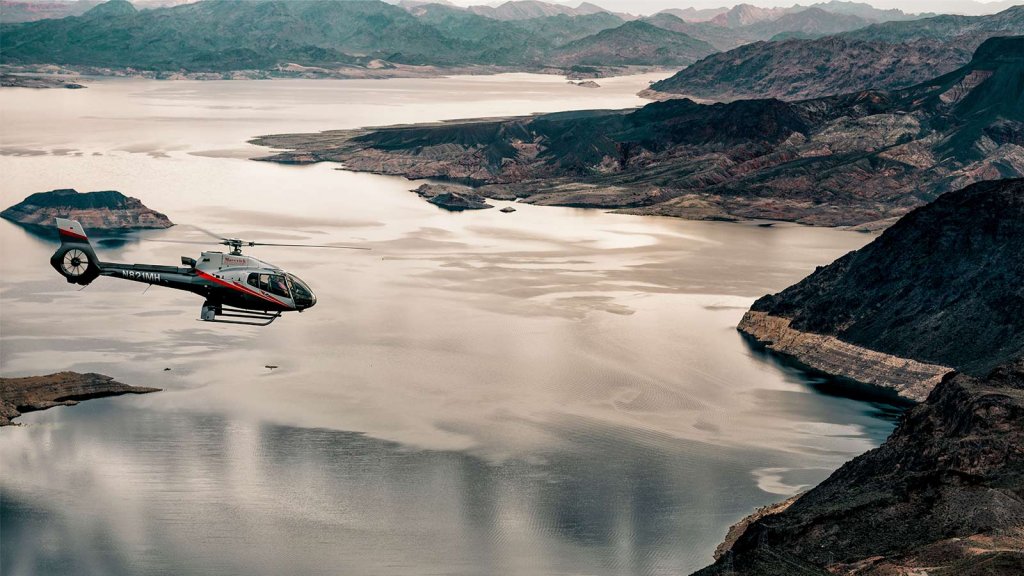
The West Rim is on the west side of the Grand Canyon and 129 miles from Las Vegas, Nevada. An approximately two-and-a-half-hour drive takes you past the Hoover Dam, Lake Mead and Boulder City. At 95.5 miles away, you can arrive at the West Rim in just under two hours from Laughlin, Nevada. From Arizona, you can travel 71 miles (1-hour 20-minute drive) from Kingman and 138 miles (2 hours, 22-minute drive) from Lake Havasu, Arizona.
The South Rim on the south side of the Grand Canyon is just under an hour and a half drive at 79 miles from Flagstaff, Arizona. Phoenix, Arizona, is a bit further away at 232 miles for a little under a four-hour drive.
HIKING
West Rim
Both rims offer walking and hiking trails delivering the grandeur of the canyon on foot.
The West Rim offers the Grand Canyon West Rim Trail, a 12.8-mile trail that features a river and is suitable for all skill levels. The Highpoint Hike at Guano Point has slightly rough terrain and is worth the walk to see some of the most beautiful views of Grand Canyon West and the Colorado River.

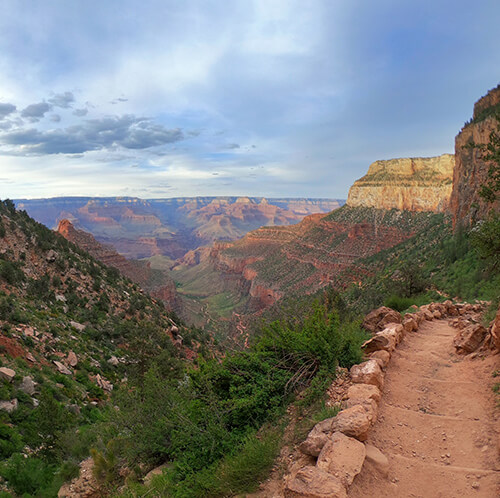
SOUTH RIM
The South Rim has ample hiking trails, most very challenging. Some hikers welcome the challenge of these trails, but be aware people with a fear of heights can find them intimidating as trails can become narrow with exposed sections. Many of these trails, while exciting, aren’t for everyone and require hikers who are more physically fit.
ADVENTURES
While the West Rim and the South Rim offer many attractions with helicopter and plane rides, whitewater rafting and hiking, the West has a few unique things to do.
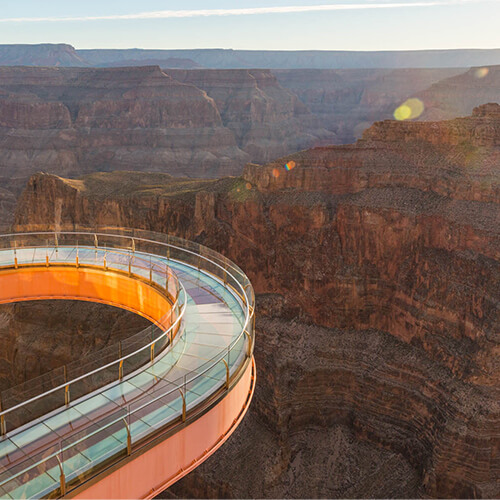
A walk on the sky is only available at the Skywalk at the Grand Canyon West Rim. This 10-foot wide, horseshoe-shaped glass bridge extends 70 feet out over the rim of the Grand Canyon. Peering through the glass platform, visitors can see 4,000 feet to the canyon floor. This engineering marvel offers unparalleled views of one of the world’s Seven Natural Wonders, and you can only find it at Grand Canyon West Rim.
While both locations offer whitewater rafting, when you decide to ride the rapids at Grand Canyon West Rim, a Hualapai river guide joins you for a one-of-a-kind rafting experience you won’t find anywhere else.
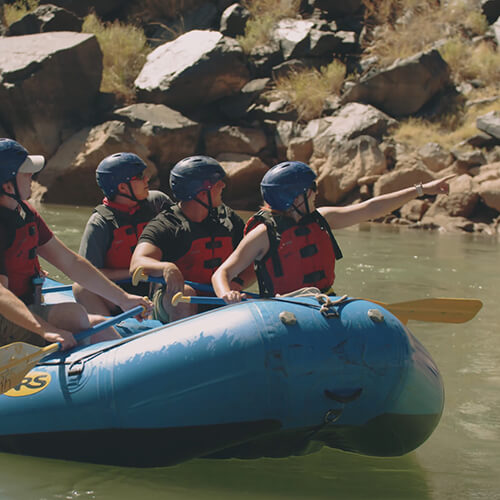
THE CANYON FLOOR
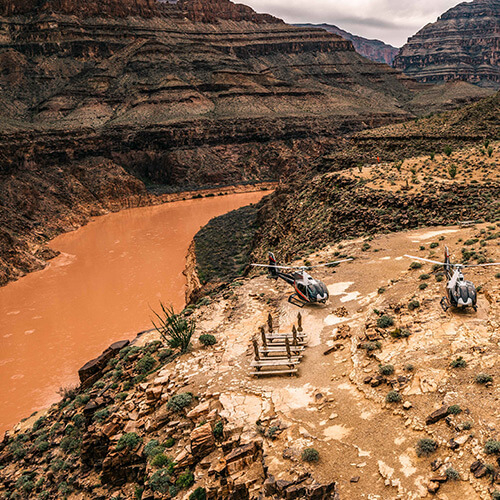
WEST RIM
The Grand Canyon offers glorious views from its rims, yet there is much more to explore down below.
From the West Rim, you can fly to the bottom in a helicopter on the Grand Canyon Discovery Tour. This exhilarating tour takes visitors 3,500 feet down to the bottom of the canyon where guests disembark from the helicopter and spend 20-30 minutes exploring the landing bluff.
THE SOUTH RIM
At the South Rim, visitors take a mule ride down into the Grand Canyon, a tradition started in the late 1800s. Riders to the canyon floor must stay overnight at Phantom Ranch. The only other way to the bottom of the South Rim is by foot, along physically demanding trails requiring an overnight stay in a campground.
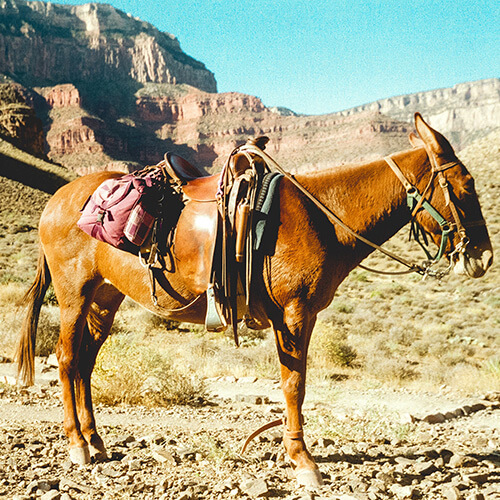
CULTURE
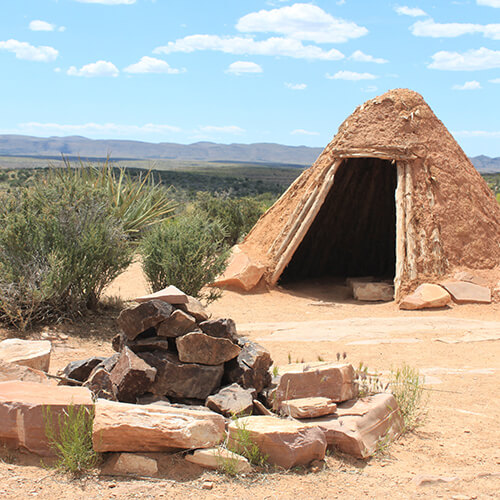
THE WEST RIM
The West Rim is not only a wonder of the world, but it’s also a tourist destination owned and operated by the Hualapai Tribe. Hualapai, meaning “People of the Tall-Pines,” had ancestral homelands consisting of approximately five million acres. In 1883, the Hualapai Reservation was established on one million acres of Hualapai ancestral lands, within the southern portion of the Colorado Plateau and the Grand Wash Cliffs escarpment. Visitors to Grand Canyon West are treated to an inside look at the traditions that support a dynamic cultural identity manifested within Hualapai people and their spiritual connection to their land.
THE SOUTH RIM
The South Rim is a part of the Grand Canyon National Park, managed by the park service. Visitors are treated to the amazing views, trails and adventures, and what many would consider a traditional Grand Canyon experience.
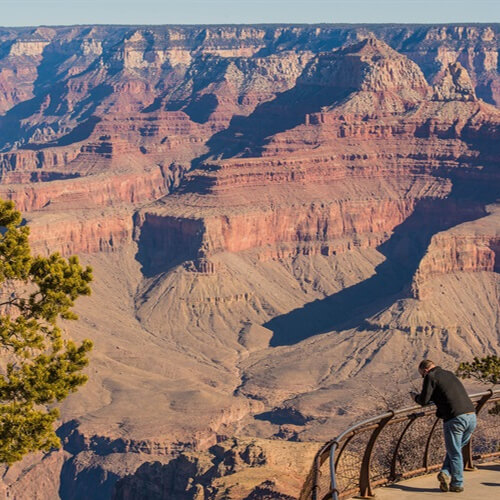
CONGESTION
The West Rim is an up-and-coming tourist destination. Annually, 1 million visitors travel to the West Rim. The South Rim sees upwards of 6 million annual visitors. When you visit the West Rim, you’ll find less congestion so you can enjoy the canyon with fewer people.
WEATHER
Weather at the Grand Canyon varies from rim to rim. The West Rim, with its location closest to Las Vegas, Nevada, is the warmest year-round. Summers are dry and hot, with mild spring and fall temperatures and occasional snowfall in the winter. The South Rim offers moderate temperatures in the spring, summer and fall, with snow and rain common in the winter.
WHAT WILL IT BE?
If you’re searching for a cultural tourist destination jam-packed with adventure, the West Rim is the place for you. If you’re looking to take in a traditional tourist experience, the South Rim is for you. No matter which you choose, you are in for a wondrous treat and memories you’ll never forget.
Grand Canyon West is a quick, easy and scenic two hour drive from Las Vegas, NV
5001 Diamond Bar Road, Peach Springs, AZ 86434


